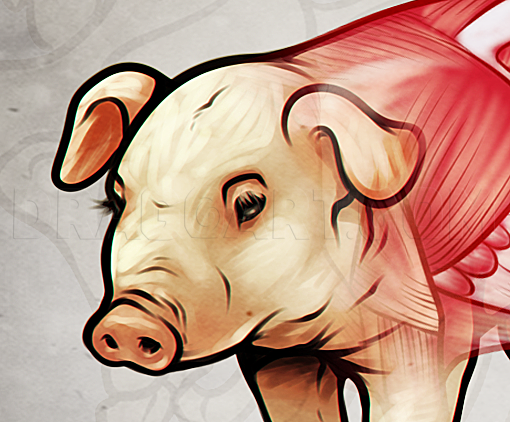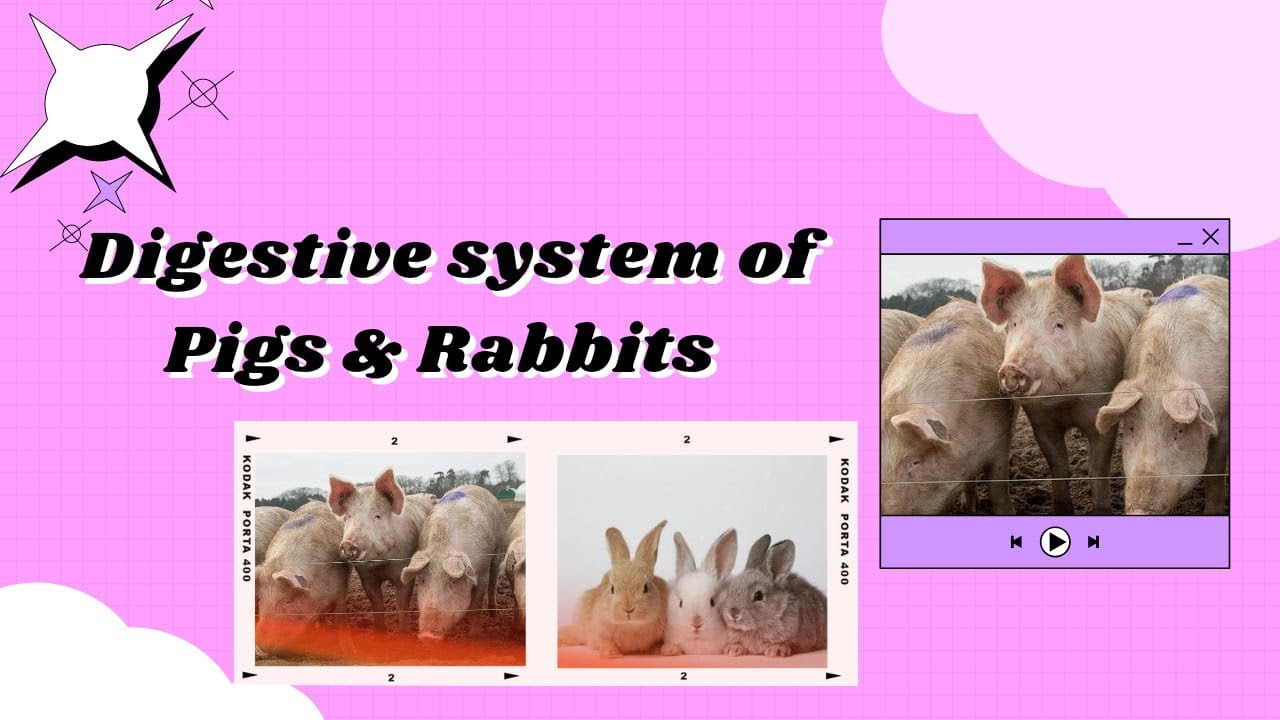Digestive System Of Pig

The digestive system of pigs, or Sus sculus domesticus, is a highly efficient and specialized apparatus designed to extract nutrients from a diverse diet. As omnivores, pigs consume a wide range of plant and animal materials, and their digestive anatomy reflects this adaptability. Understanding the intricacies of their digestive system is crucial for optimizing swine nutrition, health, and productivity in agricultural settings.
Anatomical Overview
The pig’s digestive tract can be divided into several distinct regions, each with specific functions:
- Mouth and Salivary Glands: The oral cavity is the initial site of mechanical and chemical digestion. Pigs have 44 teeth, including incisors for cutting, canines for grasping, and molars for grinding. Salivary glands secrete enzymes like amylase, which begins carbohydrate breakdown.
- Esophagus: A muscular tube connecting the mouth to the stomach, facilitating food transport via peristalsis.
- Stomach: Pigs have a simple, non-ruminant stomach consisting of:
- Fundic region: Secretes hydrochloric acid and pepsin for protein digestion.
- Pyloric region: Regulates food passage into the small intestine.
- Small Intestine: Approximately 20-25 feet long, divided into:
- Duodenum: Receives bile from the liver and pancreatic enzymes for fat, protein, and carbohydrate digestion.
- Jejunum and Ileum: Primary sites of nutrient absorption, with a large surface area due to villi and microvilli.
- Caecum and Colon: These regions house a diverse microbiome, which ferments undigested carbohydrates and synthesizes vitamins like B12 and K.
- Rectum and Anus: Store and eliminate fecal matter.
Pigs have a relatively short digestive tract compared to ruminants, reflecting their omnivorous diet and rapid feed turnover. This adaptation allows them to efficiently extract nutrients from high-energy feeds.
Digestive Physiology
The pig’s digestive system is characterized by:
- Rapid Gastric Emptying: Pigs have a quick gastric emptying rate, typically 1-2 hours, which facilitates frequent feeding and high feed intake.
- Pancreatic Enzyme Secretion: The pancreas secretes a range of enzymes, including amylase, lipase, and proteases, which are crucial for macronutrient digestion.
- Bile Acid Recirculation: Pigs efficiently recirculate bile acids, which are essential for fat digestion and absorption.
The pig's digestive physiology is optimized for high feed efficiency, with a focus on rapid nutrient extraction and absorption.
Nutrient Utilization
Pigs are highly efficient at utilizing nutrients, particularly:
- Protein: Pigs have a high requirement for essential amino acids, particularly lysine and methionine. Their digestive system is adept at breaking down and absorbing protein from both plant and animal sources.
- Energy: Pigs prioritize energy intake, with carbohydrates and fats being the primary sources. Their ability to digest and absorb starch, sugar, and lipids is well-developed.
- Fiber: While pigs are not ruminants, they can digest some fiber due to the presence of a functional caecum and colon. However, high-fiber diets may reduce feed efficiency and growth rates.
Comparative Analysis: Pig vs. Human Digestion

| Feature | Pig | Human |
|---|---|---|
| Stomach Type | Simple, non-ruminant | Simple, non-ruminant |
| Caecum Presence | Yes | No |
| Digestive Tract Length | Shorter (relative to body size) | Longer (relative to body size) |
| Fiber Digestion | Limited | Limited (but can be improved with gut microbiome) |

Implications for Swine Nutrition
Understanding the pig’s digestive system has significant implications for:
- Feed Formulation: Optimizing nutrient composition and ingredient selection to meet pigs’ unique digestive needs.
- Feed Processing: Techniques like grinding, pelleting, and extrusion can improve nutrient availability and digestibility.
- Health Management: Maintaining gut health through proper nutrition, hygiene, and disease prevention is critical for pig productivity.
Advantages of Pig Digestion
- High feed efficiency
- Ability to utilize diverse feedstuffs
- Rapid growth rates
Limitations of Pig Digestion
- Limited fiber digestion
- Susceptibility to gut health issues (e.g., diarrhea, constipation)
- High nutrient requirements relative to body size
Future Trends in Swine Nutrition

As the swine industry continues to evolve, research is focusing on:
- Precision Nutrition: Tailoring diets to individual pigs’ needs based on genetics, health status, and performance.
- Alternative Feedstuffs: Exploring novel ingredients like insect meal, algae, and single-cell proteins to reduce reliance on traditional feedstuffs.
- Gut Health Modulation: Developing strategies to promote a healthy gut microbiome, such as probiotics, prebiotics, and synbiotics.
What is the primary site of nutrient absorption in pigs?
+The jejunum and ileum, regions of the small intestine, are the primary sites of nutrient absorption in pigs, with a large surface area due to villi and microvilli.
How does the pig's digestive system differ from that of ruminants?
+Pigs have a simpler, non-ruminant stomach and a relatively short digestive tract compared to ruminants, reflecting their omnivorous diet and rapid feed turnover.
What role does the caecum play in pig digestion?
+The caecum houses a diverse microbiome, which ferments undigested carbohydrates and synthesizes vitamins like B12 and K, contributing to overall nutrient utilization.
Can pigs digest fiber effectively?
+While pigs are not ruminants, they can digest some fiber due to the presence of a functional caecum and colon. However, high-fiber diets may reduce feed efficiency and growth rates.
What are the key enzymes secreted by the pig's pancreas?
+The pig's pancreas secretes amylase, lipase, and proteases, which are crucial for macronutrient digestion, including carbohydrates, fats, and proteins.
In conclusion, the pig’s digestive system is a complex and highly efficient apparatus, optimized for rapid nutrient extraction and absorption. By understanding its anatomy, physiology, and nutrient utilization, swine producers can develop targeted nutrition strategies to support pig health, welfare, and productivity. As research continues to advance, we can expect further innovations in swine nutrition, driven by a deeper understanding of the pig’s unique digestive needs and capabilities.